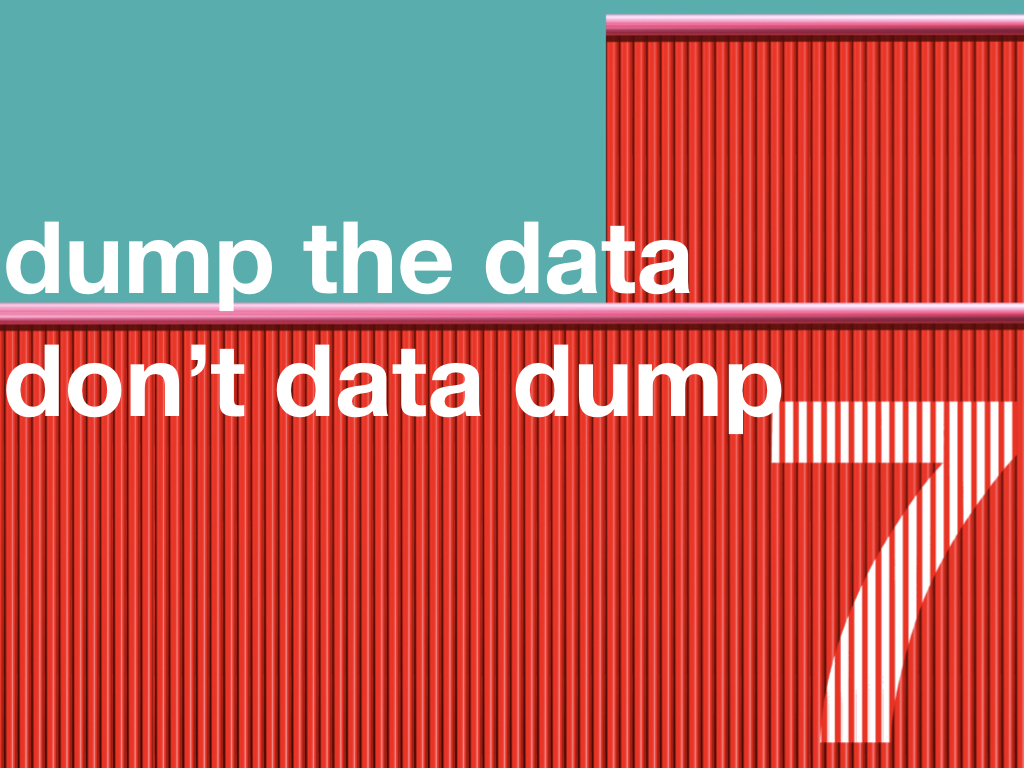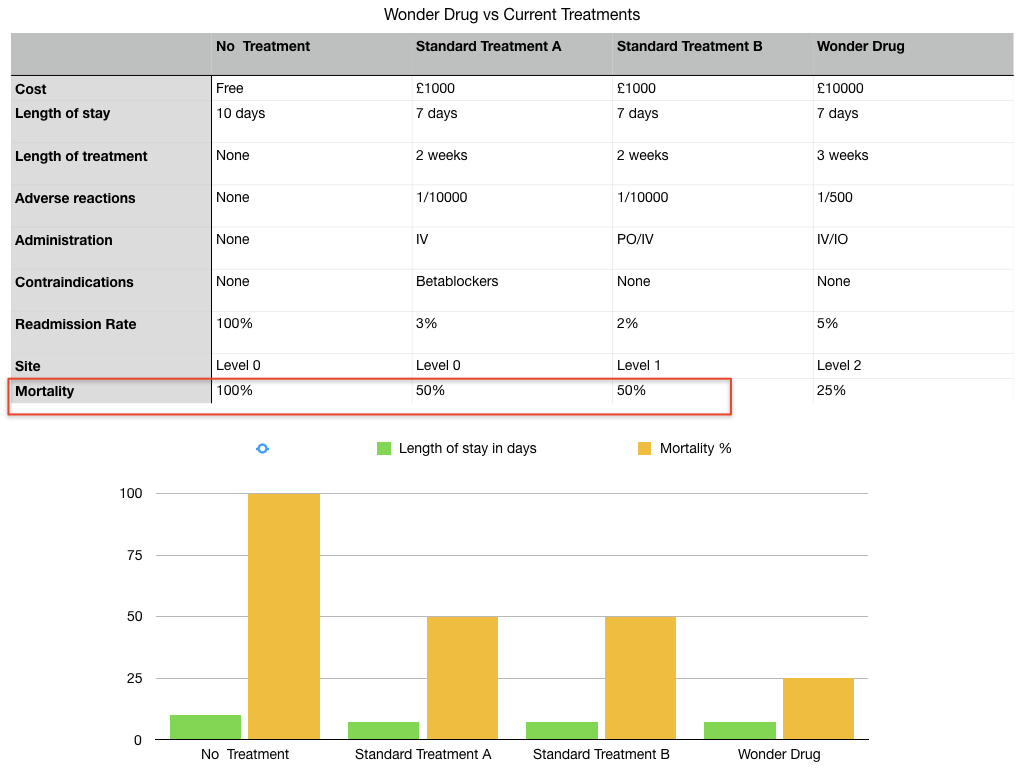A very common reason for presenting is to show the results of an audit, or a piece of research. We’ve all sat in those presentations. We’ll have done them ourselves. This very often leads to a slide like this:
What do we say? “Sorry for this busy slide, I’ll talk you through it.” No. Don’t apologise. if you have to apologise for a slide don’t have it. Just as with any presentation this is about who your audience is, what your message is and how best to tell your story. This kind of slide doesn’t consider your audience at all, it allows your message to be lost and is a terrible way to tell a story. This comes back to presenting like Lego men, about just throwing all your information on one slide and relying on our slides.
We have to simplify. Dump the data, don’t data dump.
Look at this pie chart. Which is biggest? D? E? You can have a hunch but you won’t know for certain. You’ll reading a blog, you’re not an audience member at the mercy of a presenter who at any moment might click to the next slide.
Even if you put values you still need to read round to compare with the others to find the biggest.
This graph uses the exact same data as the pie charts. Immediately you can tell that D is biggest. Less than one second and the meaning is clear. D is biggest.
Remember to pick your message. I made this slide to showcase a made up drug and the common mistakes of data presentation. It shows a table with far too much information. And a graph. What does the presenter say? “Don’t worry, I’ll talk you through it.” And they use a red box to highlight the point that this brand new wonder drug halves mortality. If that is the message make that the focus.
There. Mortality down 50%. No ambiguity. No audience lost. The message is clear and the slides help you show it.
But what if someone in the audience wants more data? Remember Step Three. You’ll have written a blog, or published a report or put the data into a Dropbox or Google Drive. Signpost your audience there. This isn’t about dumping data this is about presenting your message. My message is that drug halves mortality. If you want more data you can find it here.
Dump the data, don’t data dump.






